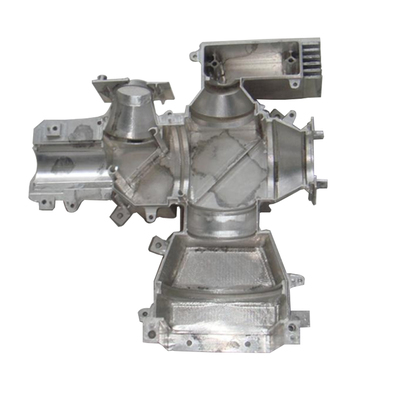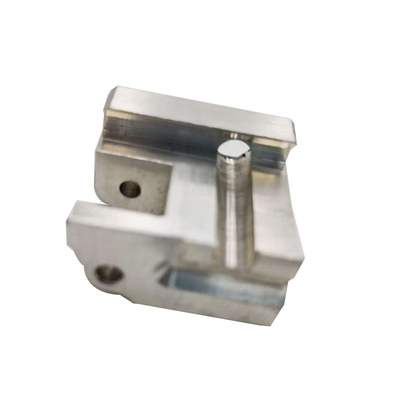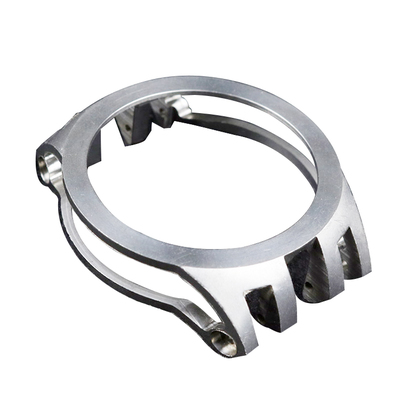Break through the bottleneck! American scientists 3D print human heart tissue
An unprecedented technical method, which makes tissue engineering a big step towards 3D printing a full-size adult heart.
On August 5, the reporter learned that researchers at Carnegie Mellon University recently published a paper in Science magazine, introducing a new technology that uses collagen to 3D bioprint human tissue structures. The printing material used is collagen, which is the main structural protein of the human body.

In this study, Andrew Lee and his colleagues, the first author of the paper, used a dual-material printing strategy of cardiomyocytes and collagen to print a left ventricular model, and further analyzed the function of the model, and observed arrhythmia related The electrophysiological behavior and ventricular contraction phenomenon. They even further printed a human heart collagen model equivalent to a newborn, proving the ability of FRESH2.0 to print large structures.
Use cells and collagen as "ink"
This technology is called "Freeform Reversible Embedding of Suspended Hydrogels" (FRESH) by its research team. The discovery of this technology has helped researchers overcome many problems involved in the existing 3D bioprinting technology. And using "soft and alive" living materials, the printed tissue structure achieves unprecedented resolution and fidelity.
3D printing is a technology that builds objects based on digital models and uses different materials to construct objects layer by layer. At the beginning of the technology, it is often used in mold manufacturing, industrial design and other fields, and then gradually used in the direct manufacturing of some products.
As early as around 2000, the technical concept of 3D bioprinting was proposed by professors from several universities in the United States; by 2003, Mironv V and Boland T systematically proposed the concept of "organ 3D printing" in Trends in Biotechnology magazine.
Although the potential of 3D printing technology is huge, but limited by technical limitations such as poor fidelity of biological tissues and low resolution of printing, the wide application of 3D printing technology in the field of biomedicine has been greatly constrained. In particular, the use of living cells to print and manufacture soft biological materials such as collagen, these two high-expected research goals have been struggling.
Today, this latest research has broken through this technical bottleneck.
Andrew Lee first proposed this method (FRESH) in 2015. After more than 4 years of continuous improvement and research and development, to the FRESH v2.0 version, 3D bioprinting technology uses rapid changes in pH to make the extruded Collagen coagulates and achieves precise control.
FRESH v2.0's 3D bioprinting technology can create tissue structures with complex functions, which can be further embedded in living cells or complex vascular systems, with a printing resolution of up to 10 μm. Using this method, Lee and his colleagues can completely rely on collagen and human cells to make all parts of the human heart, including heart tissue, contracting ventricles, and even newborn-sized hearts.
Innovative printing technology
Every organ of the human body is composed of a kind of biological scaffold called extracellular matrix (ECM), which is composed of various special cells. This ECM protein network can provide structural and biochemical signals necessary for the normal functioning of human cells. The ECM architecture is so complicated that so far, researchers have not found any possibility of reconstruction using traditional biological manufacturing methods.
When traditional methods are met with obstacles, many researchers have turned to 3D bioprinting research in order to achieve breakthroughs.
Adam Feinberg, professor of materials science and engineering and biomedical engineering at Carnegie Mellon University, said: "Our research team has proven that we can use heart cells and collagen to print out part of the heart, which has true heart function. Part, such as a heart valve or a beating ventricle." Adam Feinberg is also the instructor of this research.
"By using MRI (magnetic resonance imaging) data of the human heart, we can accurately reproduce the subject's specific anatomy, 3D bioprinted collagen and human heart cells." Adam Feinberg said.
Collagen is a very ideal 3D bioprinting material because it constitutes almost every tissue of the human body. But the previous difficulties faced by 3D bioprinting are because collagen is liquid. "If you want to print collagen in the air, it will only leave a puddle on your build platform." said Andrew Hudson, another lead author of the paper. He is also a PhD student of Adam Feinberg.
"In order to avoid the above situation, we developed a technology to prevent it from deforming (or flowing)." Andrew Hudson said.
Extruding the acidified collagen solution into the gel support solution supported by FRESH technology with a pH of 7.4, which can quickly neutralize the collagen to gel and form collagen filaments (Source: Science)
The FRESH 3D bioprinting technology developed by Feinberg's laboratory allows collagen to be deposited layer by layer in the gel support solution, and the collagen is solidified and formed in the support solution. When the printing is complete, heat the gel support solution from room temperature to body temperature to melt it. In this way, researchers can remove the support gel without destroying the collagen or cell printing structure.
Long-term impact on 3D bioprinting
For the field of 3D bioprinting, compared to previous breakthroughs made with other materials, the discovery of FRESH technology is truly exciting. Because it can print large-scale human organs with collagen scaffolds.
In April of this year, a research team from Tel Aviv University in Israel used human tissue to 3D print a heart for the first time. Prior to this, the hearts printed by people were usually made of artificial materials.
The heart printed by the Tel Aviv University research team is a miniature model, only the size of a cherry (equivalent to the heart of a rabbit). Although it is a complete heart with blood vessels and cells, it cannot contract and relax uniformly. With pumping function. And from the perspective of organ volume, if you want to print the size of the human heart, long-term research is actually needed.
For FRESH technology, it is not limited to the 3D printing of collagen. Various soft gels such as fibrin, alginate, and hyaluronic acid can use this technology to achieve 3D printing, which provides a powerful tool for tissue engineering. A platform with a wide range of applicability.
Another key point is that researchers have also developed an open source design for digital modeling, so that anyone-whether it is a researcher in a medical laboratory or a student on a high school university campus-can use the comparison Build your own high-performance 3D bioprinter at low cost.
Focusing on the future, FRESH technology can be applied in many aspects of regenerative medicine, from wound repair to organ bioengineering, spanning multiple directions. In the United States, there are currently more than 4,000 patients waiting in line for a heart transplant. Worldwide, there are millions of people who need a heart but are not eligible to enter the waiting list. Therefore, the market demand for replacement organs is quite large, and new methods are needed to repair, supplement, or manufacture artificial organs that can replace organ functions for a long time.
Adam Feinberg is also a member of Carnegie Mellon University's Bioengineered Organ Program, and FRESH is his approach to solving various problems with a new generation of bioengineered organ technology. He said: "What we are really talking about is the integration of technology. It is not only what my laboratory does in 3D bioprinting, but also other laboratories and companies in stem cell science, machine learning, computer simulation, and new The work done in the hardware and software direction of 3D bioprinting technology."
In 2018, Carnegie Mellon University's Renewable Biomaterials and Therapeutics Group used FRESH technology to create FLuidForm, and cooperated with open source 3D printer manufacturer Aleph Objects to enter the 3D bioprinting market. For Grant Flaharty, CEO and President of Aleph Objects, this collaboration makes them part of a new market that is expected to grow to nearly $2 billion in the next 8-9 years.
Grant Flaharty said: “Combining the professional 3D printer and hardware expertise proven in the engineering field with 3D bio-manufacturing technology will become a game changer. We are very willing to use 3D bio-printers to build real The functional organization of the human body."
Of course, the current 3D bioprinting technology is still at an early stage. "It is important to understand that there are still many years of research to be completed." Adam Feinberg added, "However, we should still be proud of this (FRESH technology). Because we have made great achievements in designing human functional tissues and organs. Real progress and breakthroughs have been achieved, and this paper is an important step along this path."
Sun Wei, a professor in the Department of Mechanical Engineering of Tsinghua University, gave his own predictions about this technology in an interview with the "Intellectual" public account. "I am optimistic that we will need about 15 years of hard work until this day."
Link to this article: Break through the bottleneck! American scientists 3D print human heart tissue
Reprint Statement: If there are no special instructions, all articles on this site are original. Please indicate the source for reprinting:https://www.cncmachiningptj.com
 PTJ® provides a full range of Custom Precision cnc machining china services.ISO 9001:2015 &AS-9100 certified.
PTJ® provides a full range of Custom Precision cnc machining china services.ISO 9001:2015 &AS-9100 certified.
Machining shop specializing in fabrication services for construction and transportation industries. Capabilities include plasma and oxy-fuel cutting, Tailored machining, MIG and Custom Aluminum Cnc Precision Milling Welding Jig Fixture, roll forming, assembly, Lathe machining stainless steel cnc machine shaft, shearing, and CNC Swiss Machining services. Materials handled include carbon and Passivation Stainless Steel Machining Cover Plate Parts.
Tell us a little about your project’s budget and expected delivery time. We will strategize with you to provide the most cost-effective services to help you reach your target,You are welcome to contact us directly ( sales@pintejin.com ) .

- 5 Axis Machining
- Cnc Milling
- Cnc Turning
- Machining Industries
- Machining Process
- Surface Treatment
- Metal Machining
- Plastic Machining
- Powder Metallurgy Mold
- Die Casting
- Parts Gallery
- Auto Metal Parts
- Machinery Parts
- LED Heatsink
- Building Parts
- Mobile Parts
- Medical Parts
- Electronic Parts
- Tailored Machining
- Bicycle Parts
- Aluminum Machining
- Titanium Machining
- Stainless Steel Machining
- Copper Machining
- Brass Machining
- Super Alloy Machining
- Peek Machining
- UHMW Machining
- Unilate Machining
- PA6 Machining
- PPS Machining
- Teflon Machining
- Inconel Machining
- Tool Steel Machining
- More Material





